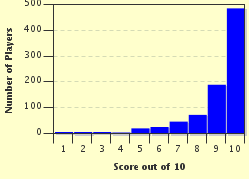Quiz Answer Key and Fun Facts
1. Cleopatra VII of Egypt was not really Egyptian at all, but part of a dynasty from another country that had ruled Egypt for almost three hundred years. Can you name that country?
2. Who was the outraged queen of the Iceni people in early Roman Britain who took on the might of the occupying Roman army, circa 60-61 AD?
3. Theodora II (980-1056) was empress of the Byzantine Empire from 1042-1056. The capital of that empire was located in which country of the modern world?
4. The amazing Eleanor of Aquitaine, one of the most powerful women in Europe during the late Middle Ages, was married twice. Her second marriage was to Henry II of England. Her first marriage was to the king of which other country?
5. Isabella I of Castile and Leon (1451-1504), with her marriage to Ferdinand II of Aragon (1452-1516), set in motion the long progress towards the ultimate formation of which great nation?
6. Known as Gloriana, the Virgin Queen, or Good Queen Bess, can you work out who this mighty queen was from the pictured clue?
7. This famous queen of France died tragically at the age of thirty-seven. Can you name her from the pictured clue?
8. This Catherine, who became the leader of one of the world's largest nations was born in another country altogether before taking the throne of her adopted land. Can you name the nation she led?
9. This wonderful ruler will always be associated with the words "We are not amused". Who was she?
10. From the age of ten, Wilhelmina was queen of which country from 1890 until 1948?
Source: Author
Creedy
This quiz was reviewed by FunTrivia editor
bloomsby before going online.
Any errors found in FunTrivia content are routinely corrected through our feedback system.

